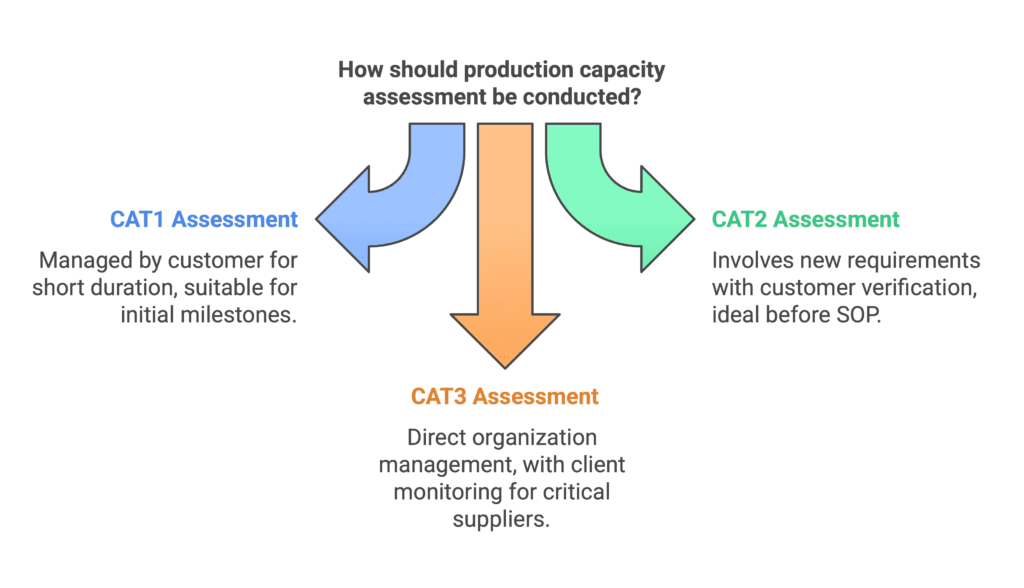After PSA and FCA combined into the Stellantis group, both organizations began to unify the requirements resulting from their synergy. This article presents the top 10 changes you need to know about when working with this client.
Knowing these changes is important as we are still waiting for an update to Stellantis ex-FCA Customer Specific Requirements (CSR), which do not yet cover them.
New names for Milestones
Currently, both of these names have been changed as follows:
- Process Verification changes its name to First Off Tool Parts Delivery Agreement (MPRM)
- Pre-Series becomes PPAP milestone (X2)
Additionally, the client defines intermediate steps in the milestones, identified as:
- X0: Supplier Tooling Kick-Off
- X1: Between MPRM and X2 – new milestone
- X2: PPAP milestone, formerly Pre-Series
- X3: Capacity assessment – Run 2 (minimum 3 production hours) – a new milestone
Capacity Assessment Procedure (CAT) replaces Production Demonstration Run
From July 2022, Stellantis ex-FCA introduced a new form for carrying out the capacity assessment – CAT. This change applies not only to the former FCA group in Europe but also to North America and the former PSA.
Additionally, there is a new intermediate step in assessing production capacity. The structure is presented below:
- CAT1 (ex PDR1): Production capacity performed at milestone X2 for 2 hours or 300 units, managed by a customer representative.
- CAT2: A new requirement assigned to the milestone of Capacity Assessment – Run 2 (X3) performed 8 weeks before SOP. The customer’s representative manages verification for a minimum of 3 production hours.
- CAT3 (ex PDR2): Production capacity performed before SOP for the entire production day. Unlike the previous ones, the organization performs this activity directly without the client’s representative. However, if identified as a performance-critical supplier, this activity will be monitored by the client.

New Method for Calculating Quality Complaints in Incoming Material Quality (IMQ)
The standard approach in cooperation with a Stellantis ex-FCA client was to calculate quality indicators based on PIQ and logistics indicators based on PL. Currently, qualitative indicators are calculated in relation to Incidents per Billion (IPB), i.e., in relation to quantity instead of weight, as was the case previously.
However, the calculation of the PL indicator does not change. The gravity of the issue we have caused at the customer is still important, and all indicators with weights are in the 08018 standard.
Incoming Material Quality – No yellow color in customer evaluation
IMQ is an assessment available in the Supply Quality Performance (SQP) portal. Another term that appears in this context is “Bid List”. Until now, the customer rating was three-color, depending on our quality performance – green, yellow, or red.
Currently, yellow is not applicable. We are graded “green” with a score greater than or equal to 80, or “red” with a score lower than 80.
Critical Incident 0-km replaces Major Quality Problem (08018 Index 9 with a Weight of 90)
The indicator, as before, will affect the Bid List (IMQ) for 6 months. Each occurrence will result in obtaining 1 penalty point.
3rd Party Containment & Problem Resolution Replaces CSL
If you have supplied car engine components before, you are familiar with this acronym. However, for the vast majority, it is certainly new.
3CPR activity replaces CSL Level 1 and Level 2. It is related to the customer’s escalation and involves the activation of 100% control using the supplier’s resources (Level 1) or an external company (Level 2) indicated by the customer.
Yard Hold Indicator developing
Yard Hold was one of the most “painful” customer escalations. Why “was”? Previously, the Bid List assigned as many as 20 penalty points. Additionally, remember that they always issue a qualitative indicator in tandem with Yard Hold, which is why it has severe consequences.
Currently, it has been modified as follows:
- With supplier alert (-5 points)
- Without supplier alert (-10 points)
As you can see, even in the second case, the YH will not significantly affect performance as before (-10 points vs. -20 points before the changes).
New Business Hold
Currently the client has added the NBH indicator to the “SQD Escalation” tool group. It also includes the two new indicators ESC Level 1 and ESC Level 2. The scores for NBH, however, remain unchanged. Automatically, we get -100 points, resulting in a final score of 0 for the duration of its enforcement.
Supplier Relationship – Mass Production vs. Forever Requirements Violations
The client previously assigned the FRV indicator to point 20.1 in the 08018 standard. Currently, the client has created the “Unauthorized Change” indicator assigned to complaint no. 32.
Lack of IATF Certificate consequences
The previous lack of certification resulted in the supplier being immediately “red” in IMQ. Currently, the client awards -25 penalty points for the lack of a certificate, so…
Stellantis ex-FCA – Summary
As you can see, it is worth carefully analyzing the requirements of this client. The synergy between FCA and PSA will continue. In addition to the aforementioned changes, the Stellantis group has also unified the vocabulary related to warranty terms.
Dariusz Kowalczyk


